Cleaning Your Horse's Hooves
Updated on 05/27/24
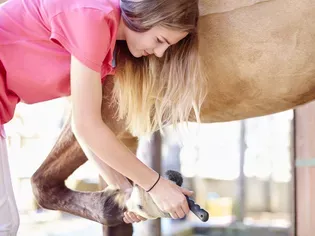
The Ultimate Guide to Cleaning Your Horse's Hooves: A Step-by-Step Journey to Healthy Hoofs
As an equestrian, caring for your horse's hooves is paramount for their well-being, comfort, and performance. Neglecting hoof care can lead to a myriad of problems, including lameness, infections, and even more severe health issues. This comprehensive guide will walk you through the essential steps of cleaning your horse's hooves, providing invaluable knowledge and practical tips to ensure optimal hoof health.
Understanding the Anatomy of the Horse's Hoof
To effectively clean your horse's hooves, it's crucial to understand their anatomy. The hoof consists of several key components:
* Frog: The soft, triangular structure in the center of the hoof that absorbs shock and provides support.
* Sole: The protective layer beneath the frog that bears weight and protects the sensitive tissues within the hoof.
* Bars: The raised ridges on each side of the frog that help prevent twisting and support the sole.
* Walls: The outer layer of the hoof that supports the weight of the horse and provides stability.
* Laminae: Sensitive tissues that connect the hoof wall to the coffin bone (the inner bone of the hoof).
Step-by-Step Guide to Cleaning Your Horse's Hooves
Materials You'll Need:
* Hoof pick
* Hoof brush
* Water
* Soft sponge or cloth
* Optional: Hoof cleaner or disinfectant
Step 1: Gather Your Supplies
Ensure you have all the necessary materials before starting to prevent interruptions during the cleaning process.
Step 2: Prepare Your Horse
* Lead your horse to a well-lit, comfortable area where they can stand relaxed.
* Tie the horse securely to prevent any surprises or accidents.
Step 3: Examine the Hooves
* Before cleaning, take a thorough look at the hooves for any signs of abnormalities, cracks, or injuries.
* Identify any areas that may require extra attention or veterinary consultation.
Step 4: Start with the Hoof Pick
* Use the hoof pick to carefully remove debris, dirt, and small stones from the bottom of the hoof and around the frog.
* Be gentle and avoid digging into the soft tissues.
Step 5: Use a Hoof Brush
* Brush away any remaining dirt and debris from the hoof walls, sole, and bars.
* Use firm but gentle strokes to avoid irritating the sensitive tissues.
Step 6: Clean the Frog
* Use a soft sponge or cloth dampened with water to gently clean the frog.
* Remove any dirt or debris that may have accumulated.
* Avoid using excessive pressure or scrubbing the frog as it is sensitive.
Step 7: Rinse and Dry
* Use clean water to rinse the hoof thoroughly, removing any excess dirt or hoof cleaner.
* Use a towel or clean cloth to gently dry the hoof, especially in between the frog and the bars.
Step 8: Check for Cracks or Injuries
* After cleaning, re-examine the hooves for any cracks, injuries, or abnormalities that may have been missed during the initial examination.
* If you notice any concerns, consult with a veterinarian immediately.
Examples of Problems that Can Arise from Poor Hoof Care
* Cracked Hooves: Neglecting regular cleaning can lead to dry, brittle hooves that are prone to cracking.
* Abscesses: Dirt and debris can accumulate in cracks or injuries, providing a breeding ground for bacteria and leading to abscesses.
* Laminitis: Inflammation of the laminae can occur when the hooves are not properly cared for, causing severe pain and lameness.
* Thrush: A bacterial infection that affects the frog and sole, causing a foul odor and discomfort.
* White Line Disease: A bacterial infection that invades the white line (the junction between the hoof wall and sole), causing separation and lameness.
Why Regular Hoof Cleaning is Essential
* Prevents Infections: Regular cleaning removes bacteria and debris, reducing the risk of infections and disease.
* Detects Early Problems: Timely hoof cleaning allows you to identify any abnormalities or injuries at an early stage, facilitating prompt treatment.
* Promotes Hoof Health: Cleaning the hooves stimulates blood flow and promotes healthy hoof growth.
* Optimizes Performance: Clean, well-maintained hooves provide stability and support, enhancing the horse's performance and comfort.
* Improves Horse-Human Bond: Regular hoof cleaning fosters a positive connection between you and your horse, building trust and respect.
Additional Tips for Healthy Hooves
* Trim hooves regularly (every 4-8 weeks) to maintain proper shape and length.
* Provide your horse with a farrier for professional hoof care and advice.
* Maintain a clean and dry stall to minimize exposure to bacteria.
* Apply hoof sealant or dressings as recommended by your veterinarian to protect and strengthen the hooves.
* Monitor your horse for any signs of lameness or hoof problems.
Conclusion
Cleaning your horse's hooves is a crucial aspect of equine care that ensures optimal hoof health and well-being. By following the steps outlined in this guide, you can effectively remove dirt, debris, and bacteria, preventing potential problems and promoting the horse's comfort and performance. Remember, regular hoof cleaning is not only an essential part of responsible horsemanship but also a testament to the deep bond you share with your equine companion.
Explore More Pets

Pony Breeds
The Difference Between Horses and Ponies

Horse Diseases & Conditions
What Do I Do If My Horse Colics?
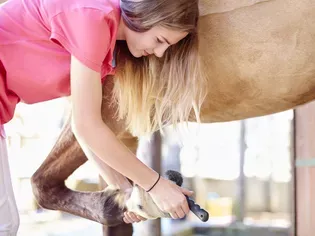
Pony Breeds
Horse and Pony Care by the Day, Week, Month and Year
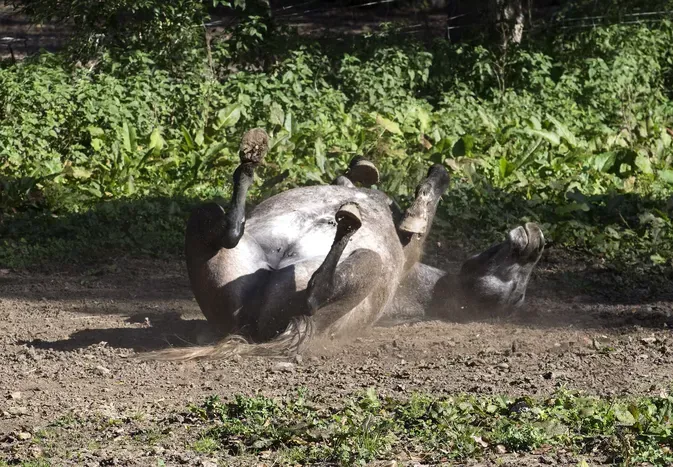
Horse Grooming
Mange in Horses
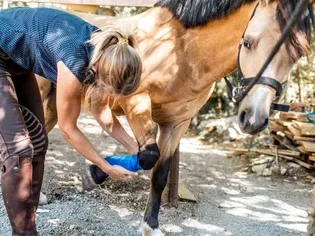
Horse Diseases & Conditions
Grease Heel in Horses

Light Horse Breeds
Gypsy Vanner Horse Breed Profile
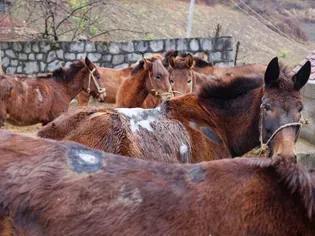
Horse Diseases & Conditions
Girth Galls and Saddle Sores
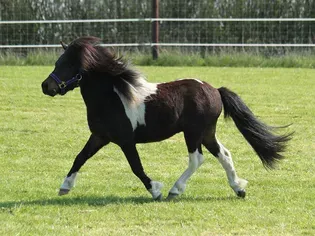
Pony Breeds
Shetland Pony Breed Profile
